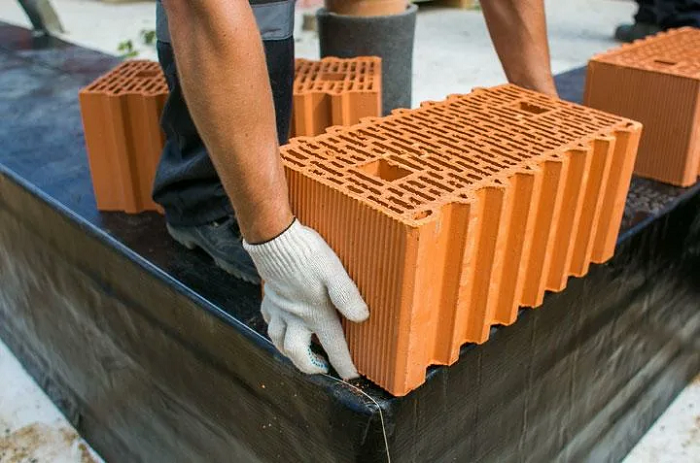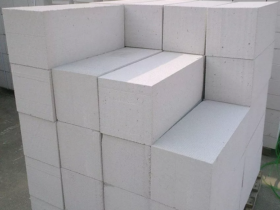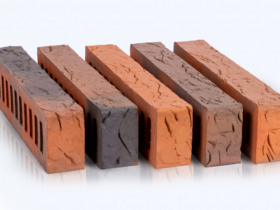The composition of large-format ceramic blocks includes porosizers – sawdust, which makes the blocks more thermally efficient than conventional solid or slotted bricks.
When fired, the sawdust burns out, forming a network of microscopic pores inside the ceramic shard itself—the best heat insulator, air, is retained in them.
Such blocks very well maintain an optimal indoor microclimate for living. The thermal inertia of ceramic blocks, like bricks, is high, which ensures coolness in the room during the hot season and warmth in the winter.
Porous ceramic blocks differ from classic bricks not only in shape and size, but also in the system of vertical tongue-and-groove joints. The solution is applied only to horizontal joints, vertical joints are joined like a constructor.
The main disadvantage of ceramic blocks is fragility. The outer and inner walls of the blocks are thin – the material requires careful handling, it cannot be transported, loaded and unloaded at random. This leads to another problem – walls can only be tapped manually (for example, with a hammer), so as not to destroy the blocks. Ceramic blocks absorb moisture perfectly – as a result, this leads to cracks running through them. It is also worth considering the low fastening capacity – for example, they do not hold standard dowels.









